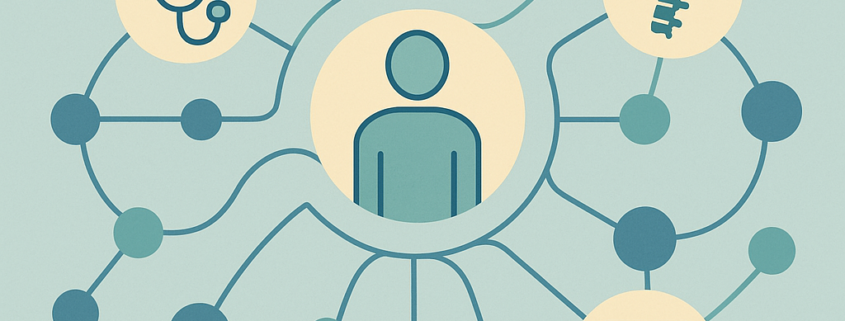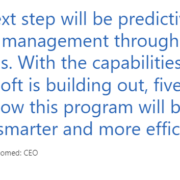Whitepaper: Transforming Musculoskeletal Care with a Systems Approach and Technology Enablement
Musculoskeletal (MSK) conditions, particularly chronic low back pain (CLBP), represent a significant global healthcare challenge, impacting patient well-being and straining healthcare systems worldwide. Traditional, often linear approaches to managing these conditions have yielded limited progress, highlighting the need for a paradigm shift towards comprehensive, integrated care models. This whitepaper explores the critical importance of adopting a systems-based strategy for MSK care and showcases the success of Ontario, Canada’s Rapid Access Clinics (RAC) model for low back pain as an example of effective implementation. Furthermore, it introduces the Arthur CareNexus RAC Platform as a technology-driven solution designed to empower healthcare organizations in establishing and scaling similar high-value, patient-centric MSK care programs.
The Need for a Systems Approach
The prevailing approaches to MSK care often fall short due to a lack of integrated strategy, resulting in fragmented care, delayed interventions, and inefficient resource utilization. As W. Edwards Deming famously stated, “Every system is perfectly designed to get the result that it does”. This underscores the necessity of a well-defined, implementable, scalable, and sustainable system strategy to effectively address the complexities of MSK conditions. Without such a strategy, even the most well-intentioned guidelines and best practices risk becoming ineffective due to an inability to spread and scale. The drivers of chronic conditions like low back pain are heterogeneous, demanding a holistic approach that considers various factors beyond just the physical symptoms.
The Ontario RAC Model: A Success Story
Recognizing the limitations of existing approaches, Ontario, Canada, developed and piloted the Inter-professional Spine Assessment and Education Clinics (ISAEC) model, later evolving into the province-wide Low Back Pain Rapid Access Clinics (RAC). This shared-care model, enabled by central digital and clinical infrastructure, aimed to deliver high-value integrated services to patients with persistent, unmanageable low back pain closer to their homes. The RAC model’s objectives were clearly defined:
- Improve outcomes and satisfaction with healthcare delivery for patients with persistent or unmanageable recurrent LBP-related symptoms.
- Decrease the utilization of lumbar spine MRIs.
- Reduce unnecessary referrals to LBP-related specialists.
- Inform the provincial roll-out of an effective model of care.
The patient and care delivery scope focused on individuals with upstream chronic low back pain (between 6 weeks and 52 weeks) requiring assessment, education, and self-management strategies, without directly delivering long-term treatment or rehabilitation.
The RAC model demonstrated significant positive impacts on:
- Patients – over 90% satisfaction across 8 patient experience/outcome dimension;
- Providers – over 90% recommend the model to a colleague and growth to supporting over 10000 primary care providers;
- Payer – a 28% reduction in overall annual utilization of LBP-related diagnostic imaging ordered by primary care practitioners in the first year, with an additional 5% reduction in the second year. This translated to substantial cost avoidance per physician based solely on imaging.
The success of the Ontario RAC program highlights the effectiveness of a well-designed, integrated, and technology-enabled approach to MSK care.
Key Elements of an Effective MSK Care System
The success of the Ontario RAC model underscores several key elements crucial for an effective MSK care system:
- Prevention and Early Intervention: Addressing risk factors and providing timely interventions to prevent acute conditions from becoming chronic.
- Integrated Care Models: Fostering seamless collaboration and communication between primary care providers, specialists, and allied health professionals.
- Standardized Multi-Dimensional Assessment: Utilizing consistent and comprehensive assessments to understand the patient’s condition and guide appropriate care pathways.
- Patient Education and Self-Management: Empowering patients with the knowledge and tools to actively participate in their care and manage their condition effectively.
- Technology Enablement: Leveraging digital platforms to facilitate referral management, care coordination, communication, data analytics, and the delivery of best practices at the point of care.
Introducing Arthur CareNexus RAC Platform
The Arthur CareNexus RAC Platform is specifically designed to enable healthcare organizations to implement and manage integrated MSK care programs similar to the successful Ontario RAC model. This cloud-based platform provides a comprehensive suite of tools and functionalities to support the entire patient journey, from initial referral to discharge.
Benefits of Arthur CareNexus
By leveraging the Arthur CareNexus RAC Platform, healthcare organizations can realize numerous benefits:
- Improved Patient Outcomes: Facilitate timely access to appropriate care, promote patient engagement, and support adherence to evidence-based practices, leading to better clinical outcomes and increased patient satisfaction.
- Optimized Resource Utilization: Reduce unnecessary diagnostic imaging and specialist referrals through standardized assessments and efficient care pathways, resulting in significant cost savings.
- Enhanced Care Coordination: Streamline communication and collaboration among all members of the care team, ensuring seamless transitions and a cohesive patient experience.
- Data-Driven Insights: Gain valuable insights into program performance through robust analytics, enabling continuous quality improvement and informed decision-making.
- Scalability and Sustainability: The platform’s design supports the implementation and expansion of integrated care programs across diverse settings and patient populations, ensuring long-term sustainability.
Conclusion
Addressing the global challenge of musculoskeletal conditions requires a fundamental shift towards a systems-based approach that prioritizes integrated care, patient empowerment, and the adoption of enabling technologies. The success of Ontario’s Rapid Access Clinics model for low back pain provides a compelling blueprint for effective MSK care delivery. The Arthur CareNexus RAC Platform offers a powerful and comprehensive solution for healthcare organizations seeking to replicate this success and transform their MSK care programs, ultimately leading to improved patient outcomes, enhanced efficiency, and a more sustainable healthcare system.









